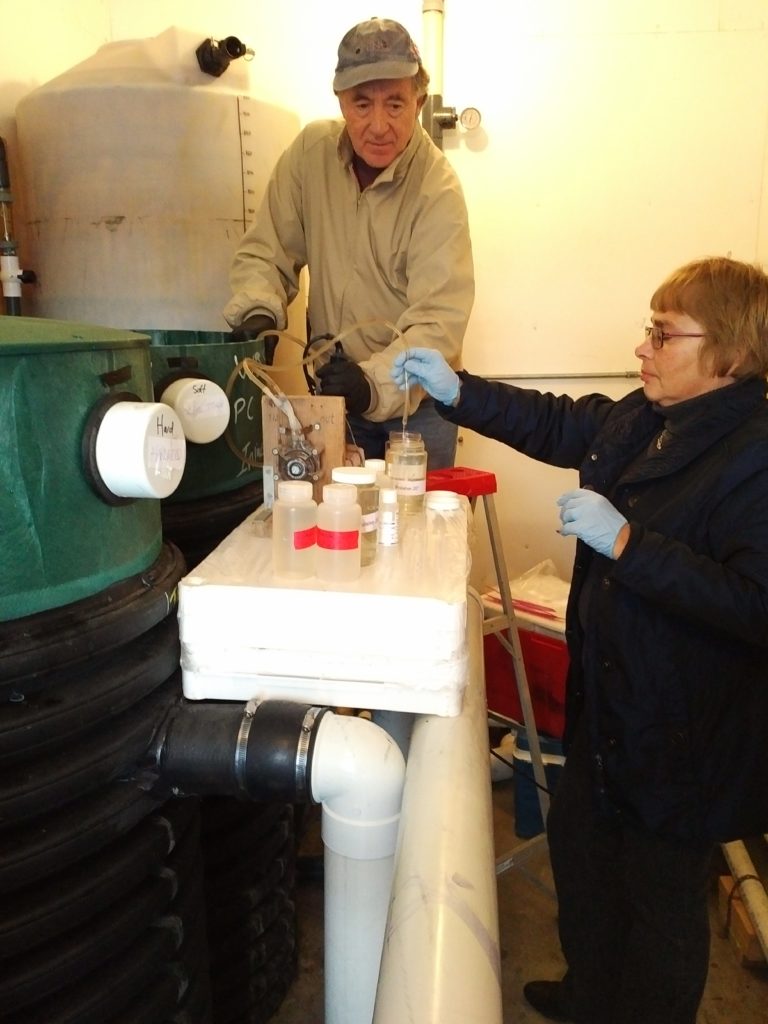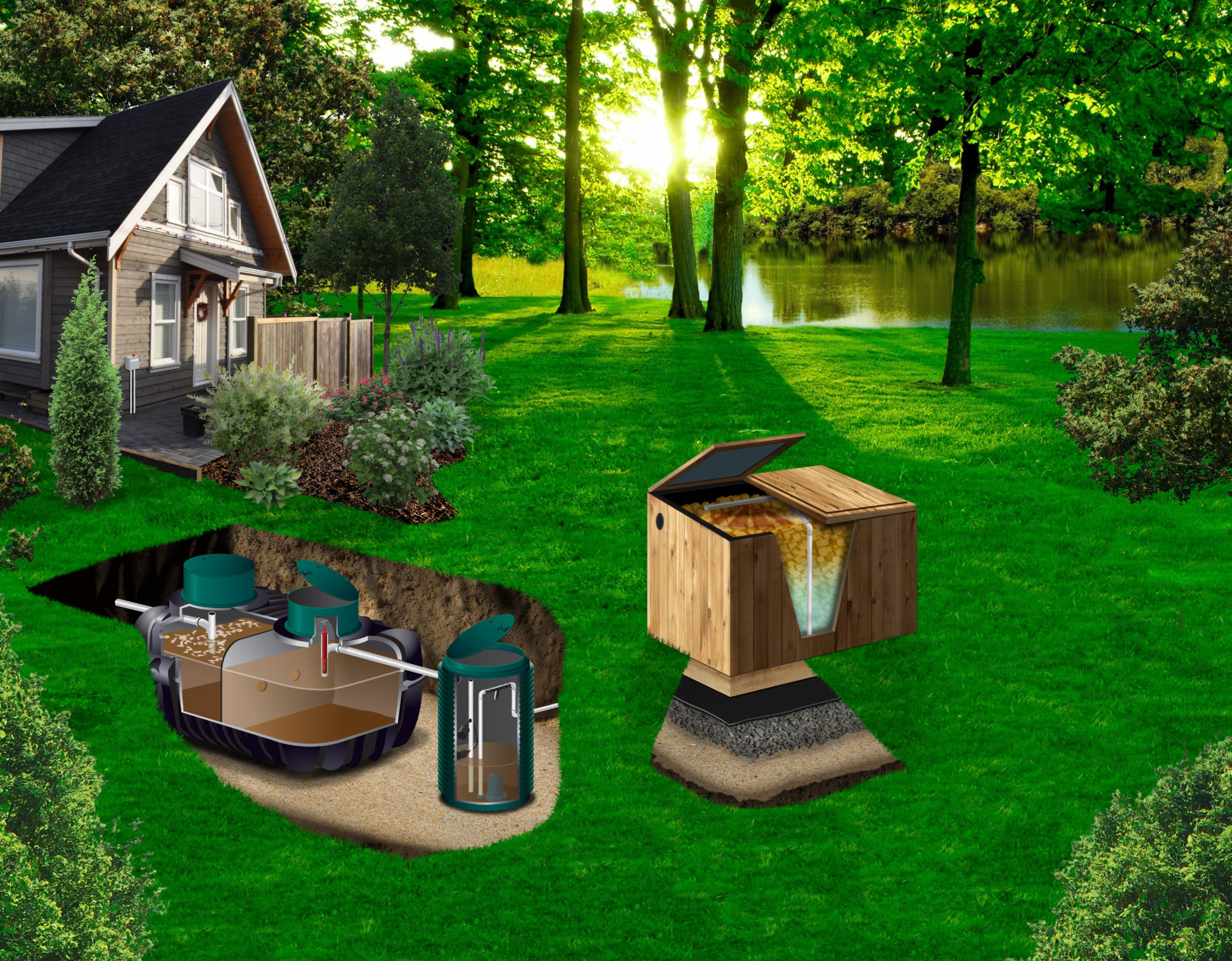As part of a multi-pronged project with University of Guelph (UofG) researchers, the Canadian company is planning to improve its onsite sewage treatment solution, studying the use of a unique filter material added to its electrochemical phosphorus-removal system as a possible soil nutrient.
“We’re using a glassy silicate material, similar in appearance to fibreglass, to capture iron and phosphorus in our phosphorus-removal system, and are looking at reusing it as a fertilizing soil amendment,” says Craig Jowett, founder of Waterloo Biofilter.
With the help of a team led by UofG professor Susan Glasauer, and the backing of Southern Ontario Water Consortium’s Advancing Water Technologies (AWT) program, growth trials are underway using the spongy, phosphate-laden material. Positive results have already been seen in trials with potted crops, where the material can be contained well, and a field trial is underway using rye grass.
Aside from agricultural applications, Glasauer also sees potential in using the material to rehabilitate quarry soils.
“I see this sponge as being a great way to be able to retain moisture to allow microbes to colonize the soil, which will create the environment for plants to start growing,” says Glasauer. “And the nice thing is that you can leave that material in the soil and eventually it’s going to break down into basic soil components. We don’t know yet how quickly, but eventually it will break down after the plants have established themselves and had some years of growth,” she adds.
One unanticipated hiccup in the early laboratory stages of the project has been sourcing a consistent waste stream to filter through the material. An initial source from a school failed to provide a waste stream typical of a residential system, since it offered a much lower amount of solid waste and didn’t produce any discharge during the summer months.
“Every household, every system is treating a slightly different waste stream. We’ve gotten around that now by using an artificial waste solution, which is based on a composition of a lot of waste-discharge streams,” Glasauer says.
In addition to the fertilizing possibilities of recovered phosphorus, Waterloo Biofilter’s AWT-backed project is also focusing on further understanding and optimizing the geochemical reactions occurring in the company’s novel filtration systems that remove nitrogen and phosphorus from wastewater. The systems are additions to Waterloo Biofilter’s patented trickle filter-type treatment system, which uses an engineered filter medium that works like a low-pressure membrane to provide a physical + biological barrier that wastewater must pass through for treatment before entering the environment.
The company’s WaterNOx-S and Waterloo EC-P systems remove nitrogen and phosphorus, respectively, and are low-maintenance technologies that effectively trap nutrients from individual residences in challenging sites such as remote areas or cottage country. Nitrogen and phosphorus are key contributors to the growth of algal blooms.
“What’s really exciting for me is that phosphorous used to be a difficult thing to remove in sewage, especially in residential systems. There wasn’t really an easy way to add chemicals or a reactive media to take out phosphorous. Now we’re using low-energy electrochemistry,” Jowett says.
Using Jowett’s geological background and knowledge of minerals, iron is being added to react with the phosphorous, which is forming an iron-phosphate mineral.
“Iron has this nice property that it scavenges up the phosphate,” says Glasauer.

Craig Jowett (Waterloo Biofilter) and Irina Solntseva (University of Guelph) sampling pore water from the NOx-LS system removing all nitrate entering it, now being designed for residential and commercial systems in Ontario.
“Our system is unique in that we want to make an insoluble mineral downstream in the leach field, or the biofilter or sand filter, rather than making a phosphorus-rich sludge,” Jowaett says. “A sludge has to be pumped out more frequently and then you have to find somewhere to take it — which can be difficult for an island or cottage,” he adds.
With an iron-phosphate mineral precipitating, Jowett says, there is also the opportunity to recover it and reuse it if desired.
As part of the focus on nitrogen removal, system optimization will be a key focus of the overall project in a bid to form the mineral gypsum to help understand the behaviour of sulphate in the water following treatment.
“You do that by combining the sulphate with calcium,” Glasauer says. “The question is do we need to add more calcium to try to force the system to produce gypsum so there’s less sulphate in the water,” she notes.
Both Jowett and Glasauer agree that partnerships like theirs, with backing by funding programs such as AWT, are a win-win for all parties.
“I think people outside the country don’t realize the extent to which Canadian researchers depend on industry and these partnerships,” Glasauer says, adding that working with Jowett has been particularly rewarding since “he’s a researcher at heart and understands the need to do things in a rigorous way.”
Jowett, a former University of Waterloo research professor, says he has been able to do much of the science-related work himself in the past, but working with Glasauer and the University of Guelph offers much-needed guidance when it comes to things like regulatory approvals.
“When we need certain expertise, like getting approvals for reusing this material as a fertilizing soil amendment, you need a body like the University of Guelph to test it and make sure it’s okay. You have to get regulatory approval, and it can be very time-consuming,” he says.
Ultimately, Glasauer says she’d like to see Waterloo Biofilter’s systems implemented on a wider scale. “To see these being installed and seeing the ecosystems rebound — I think that would be amazing”, she says.
That potential for broader acceptance has just got a boost from a competition in the United States. Waterloo Biofilter’s EC-P system has recently been selected as one of 15 finalists for Stage 1 in the George Barley Water Prize. The prize, which culminates in a $10 million grand prize for a technology capable of removing and recovering phosphorus from freshwater bodies, is hosted by Florida’s Everglades Foundation. As it enters the next stage, the competition will certainly raise the profile of this Ontario technology!


